Honeywell door locks stand at the forefront of home security technology, offering users the convenience of keyless entry combined with robust security measures. Regularly changing the code on your Honeywell door lock is a critical practice, ensuring that your home or office remains secure against unauthorized access. This guide will explore the various steps on how to change code on honeywell door lock, including those with keypads and touchscreens.
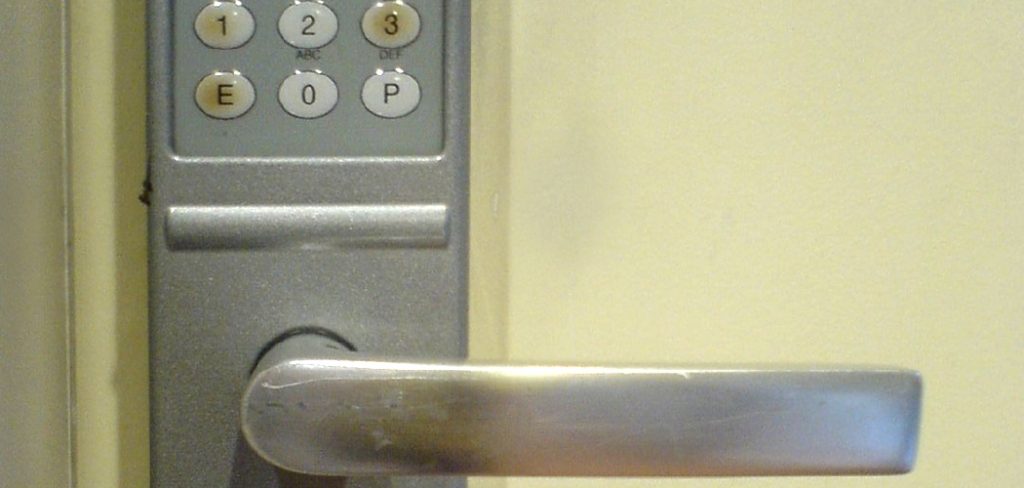
Each type of lock—whether part of the Prestige, RTH, or LYNX Touch Series—has its unique code-changing procedures designed to enhance security while providing ease of use. Users can maintain optimal security levels through strong, regularly updated access codes by understanding and applying these procedures.
Identifying Your Honeywell Door Lock Model
A. Importance of Knowing Your Model
Understanding the specific model of your Honeywell door lock is fundamental to accurately following the code-changing instructions. This knowledge ensures that the process is completed safely and effectively, avoiding potential lockouts or security risks. Most Honeywell locks indicate the model number directly on the device, often on the interior side of the lock, where it’s not visible from the outside.
If this is not available, the model number can usually be found in the user manual or by conducting a search on the manufacturer’s website. Recognizing your door lock model not only guides you through the correct procedure but also helps in troubleshooting any issues that may arise during the code change process.
B. Common Honeywell Door Lock Models
The most frequently encountered Honeywell door lock models include the Prestige Series, available with both keypad and touchscreen options, the keypad-based RTH Series, and the touchscreen-equipped LYNX Touch Series. These models cover a wide range of features and security options, catering to diverse user needs.
Specific step-by-step instructions for changing the code on these common models will be outlined in this guide. For owners of less common models not specifically covered, it is advised to consult the user manual for detailed instructions or contact Honeywell support for assistance.
Understanding Your Current Code
Knowing your current programming or master code is a fundamental step before attempting to change the code on your Honeywell door lock. This existing code grants access to the lock’s programming functions, including the ability to update or change the user access code. If you’re unsure of your current code, the first place to check is the device’s user manual, where initial setup codes are often listed.
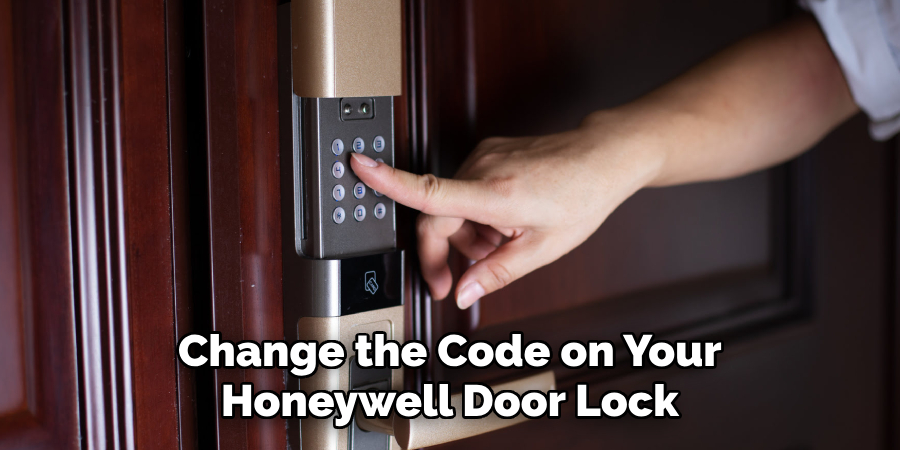
Alternatively, if the lock was previously programmed by someone else, reach out to them as they might remember the code. In cases where the current code is completely unknown, and no documentation is available, contacting Honeywell support can provide a solution.
They can guide you through the steps necessary to recover or reset the master code, ensuring you maintain control and security over your Honeywell locking system.
How to Change Code on Honeywell Door Lock: Prestige Series Locks (Keypad)
A. Programming Mode Activation
To change the code on your Honeywell Prestige Series lock with a keypad, first ensure you’re in programming mode. This mode is crucial for making alterations to your lock’s settings. For the Prestige series, initiate programming mode by entering your current master code, followed by pressing the ‘#’ button.
Once entered correctly, the lock indicates that it’s ready for programming through a visual or audible signal, depending on the model. Consult your user manual for the exact sequence, as it may vary slightly among different Prestige models. Entering programming mode is the first step in securely updating your Honeywell door lock code.
B. Identifying User Codes
Within the Prestige Series locks, two main types of codes are used: the master code and individual user codes. The master code is integral to altering any settings on the lock, including changing all user codes. On the other hand, individual user codes are designed for different users to access daily.
These codes can be customized per user, granting access to family members, friends, or employees without using the master code. Understanding the distinction between these two types of codes is essential for effectively managing access to your property.
C. Selecting a User Code Slot
After entering programming mode, the next step is to choose the specific user code slot you wish to alter. On the Prestige series keypad, user slots are typically numbered (e.g., user 1, user 2). Use the keypad to select the appropriate slot by entering its corresponding number.
This action primes that specific user code for editing. In many instances, the lock will confirm the selected user slot through a short beep or light flash, signaling that it’s ready for the new code to be inputted. This precise selection process ensures users can easily manage and customize access as needed.
D. Entering the New Code
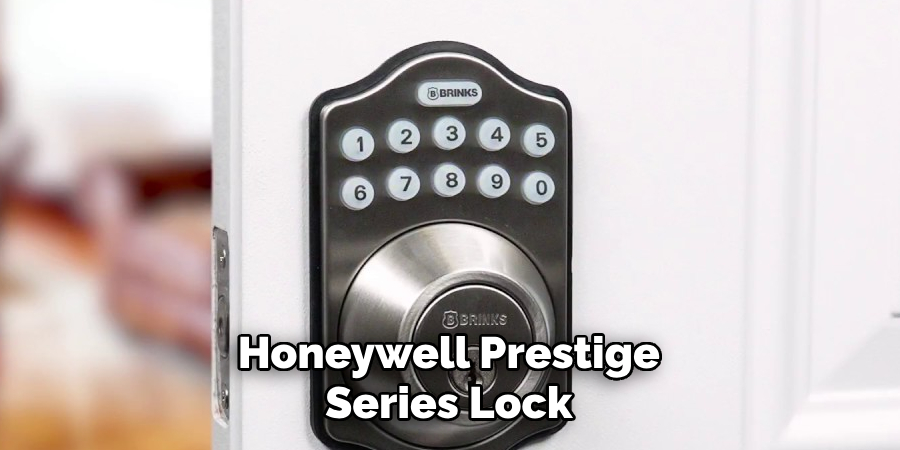
Crafting a new, secure, and memorable code is the final step in the code-changing process for your Honeywell Prestige Series lock. The recommended length for codes typically falls within the 4-8 digit range, balancing ease of recall with security. Enter the new code on the keypad once you’ve selected the user code slot. After inputting the new code, finalize your selection by pressing the ‘#’ button to save the change.
This procedure not only updates the user access code to something more secure but also makes it memorable for the designated user, enhancing the overall security of your property. Remember to test the new code to ensure the change was successful and that the lock functions as expected.
Additional Considerations for Prestige Series Locks (Keypad)
A. Programming Multiple User Codes
For households or offices requiring multiple user accesses, the Prestige Series allows for the programming of additional user codes. Simply repeat the steps outlined in the previous section for each new user, ensuring to select a unique user slot and code each time. This flexibility securely accommodates various users.
B. Exiting Programming Mode
Once you have completed making changes or adding new codes, exiting programming mode is crucial to ensure your lock’s settings are secure. Typically, this involves pressing a designated button sequence, such as the ‘#’ button, followed by the ‘1’ button. Always refer to the user manual for model-specific instructions to properly exit the programming mode.
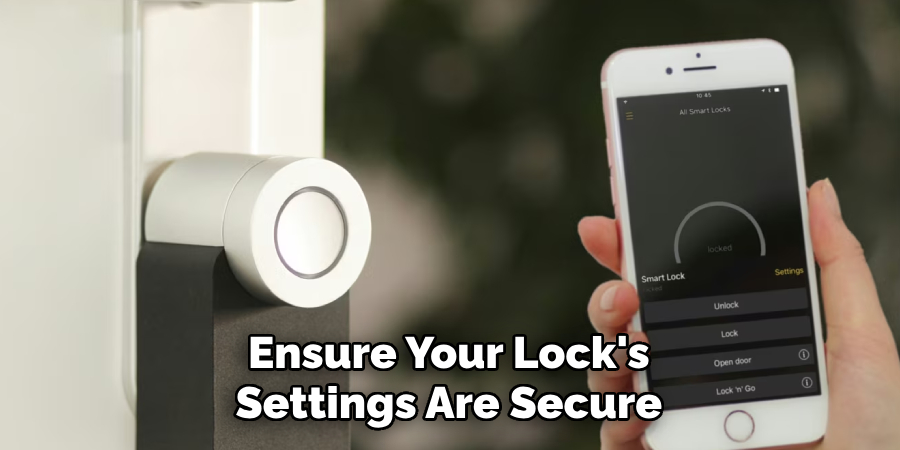
C. Resetting the Master Code (optional)
In instances where the master code is forgotten, a reset may be necessary to regain control of your lock’s settings. For the Prestige Series, this process usually requires you to remove the lock’s battery and then press and hold a specific button (often the programming button) while reconnecting the battery.
This sequence triggers a factory reset that clears the master code, allowing you to set a new one. Due to the security implications, consult your user manual or contact Honeywell support for detailed guidance and ensure you follow the exact steps to prevent unauthorized access or potential lockouts.
How to Change Code on Honeywell Door Lock: Prestige Series Locks (Touchscreen)
A. Accessing Settings Menu
To access the settings on your Honeywell Prestige Series touchscreen lock, start by waking the screen with a quick touch. Look for the gear icon, typically located in the lower right corner of the screen, which symbolizes the settings menu.
Tap this icon to enter the settings. You’ll find various options for customizing your lock’s functionality within this menu. Depending on the model, you may need to enter your master code to proceed further, ensuring security and restricted access to programming features.
B. Selecting User Management
Once in the settings menu, scroll through the available options until you see “User Management,” “Users,” or a similarly titled function. This section is designed for managing individual access codes.
Tapping on this option will bring you to a list of user slots and settings that can be adjusted to your needs. This area allows for the addition, deletion, or modification of user codes, essential for maintaining secure and controlled access to your property.
C. Choosing a User Code Slot
In the “User Management” menu, you’ll see user slots listed (e.g., user 1, user 2). To modify a code, select the user slot you want to change by tapping on it. The touchscreen interface makes it easy to identify and choose the correct slot, ensuring you’re updating the right code for the right user.
D. Entering the New Code
You’ll be prompted to enter a new code when you’ve selected the right user slot. It’s advisable to create a code that is both secure and easy to remember, within the recommended 4-8 digit range.
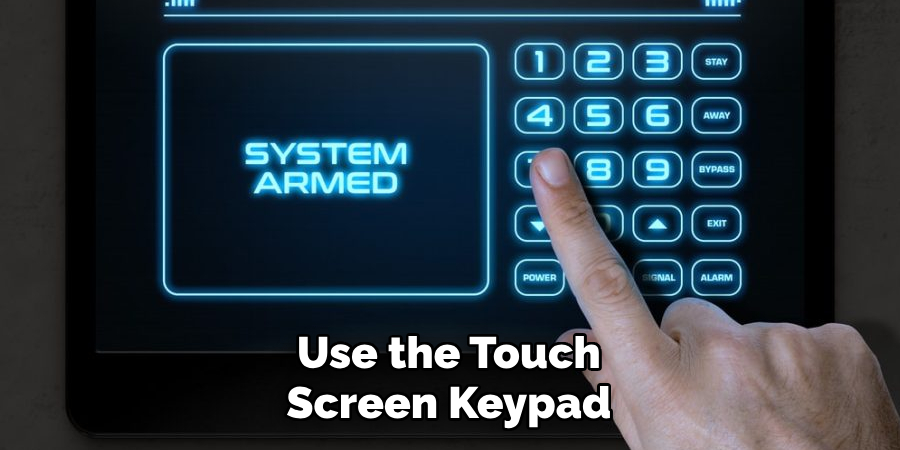
Use the touch screen keypad to enter the new code. Once entered, finalize your update by following the on-screen instructions, usually involving a confirmation tap. This easy process ensures your new code is set and ready to use, enhancing your lock’s security and personalization.
How to Change Code on Honeywell Door Lock: RTH Series Locks (Keypad)
A. Entering Programming Mode
Owners must perform a specific button sequence to initiate programming mode on the Honeywell RTH Series locks. This usually involves pressing and holding the ‘Programming’ button until the keypad lights up or beeps, indicating that the lock is ready for programming.
Each RTH Series model may have a slightly different process, so consulting the user manual for the exact sequence is crucial. This step is essential for facilitating secure and targeted modifications to your lock’s programming and access codes.
B. Selecting User Code Options
Upon successfully entering programming mode, the next step is to navigate through the keypad options to locate the “User Codes” or a similar function. This can typically be done using the arrow buttons to scroll through the menu until you find the desired option.
Pressing the ‘Select’ or ‘Enter’ button will then open the user code programming options. This process allows for precise management of access codes, ensuring that only authorized individuals can make changes or updates.
C. Choosing a User Code Slot
Using the keypad, select the specific user code slot you desire to change, such as ‘user 1’, ‘user 2’, etc. This is done by inputting the corresponding number of the user slot or by navigating through the options presented on the screen. This targeted selection ensures that intended changes apply to the correct user without affecting others’ access codes.
D. Entering the New Code
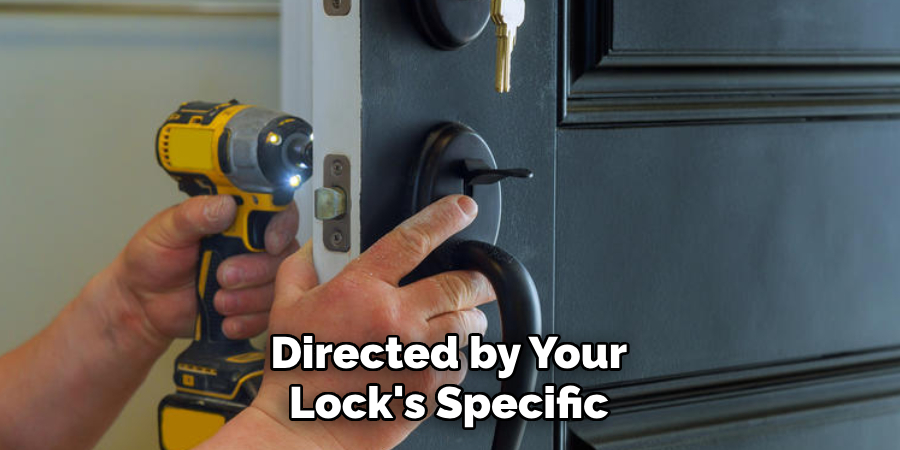
To enhance security, it’s advisable to create a new code that is both secure and easy to remember, adhering to the recommended 4-8 digit length. Upon choosing the desired user slot, enter the new code using the keypad, then confirm or save the entry as directed by your lock’s specific instructions. This process ensures your lock’s integrity by updating access codes to something more personal and secure.
How to Change Code on Honeywell Door Lock: LYNX Touch Series Locks (Touchscreen)
A. Accessing System Settings
To access the Honeywell LYNX Touch Series lock system settings, begin by tapping the touchscreen. Identify the “Settings” icon, often represented by a gear symbol, located on the home screen.
Tap this icon to open the system settings menu. In some models, this might also involve entering a master access code for security purposes. This will grant you access to the lock’s comprehensive settings, where various adjustments, including user code modifications, can be made.
B. Selecting User Codes
Within the system settings menu of the Honeywell LYNX Touch Series, locate the option labeled “User Codes” or something similar, such as “Access Codes” or “Code Management.” This can usually be found by scrolling through the menu options on the touchscreen.

Tapping on this option will open a new screen dedicated to managing all user-specific codes, offering a clear overview of existing codes and the ability to add or update codes as needed.
C. Choosing a User Code Slot
On the “User Codes” screen, you’ll see a list of available user code slots (e.g., user 1, user 2). Touch the slot corresponding to the code you wish to change. This action selects the specific user slot for modification, ensuring that any updates apply only to the chosen slot without disrupting the access permissions of other users.
D. Entering the New Code
For enhanced security, opt for a new code that balances memorability with complexity, adhering to the recommended length of 4-8 digits. With the user code slot selected, input the new code using the touchscreen keypad. After entering the code, follow the prompts to confirm or save the change, effectively setting your new secure access code.
Troubleshooting Common Issues
A. Incorrect Current Code
If the current code entered does not work, double-check to ensure it’s the correct one. If multiple attempts fail, it may indicate a deeper issue with the lock’s programming. In such cases, reaching out to Honeywell customer support can provide guidance and potential solutions.
B. Code Not Saving
Should you encounter problems with the new code not saving, first verify that the code adheres to the recommended 4-8 digit length and does not use prohibited sequences. If the issue persists after retrying the programming process, consult the user manual for specific guidelines or contact Honeywell support for further assistance.
C. Lock Not Responding
A non-responsive lock often suggests depleted batteries. Check the lock’s power source, replacing batteries if necessary. If this does not resolve the issue, a lock reset might be required—this should be done following the instructions in the user manual. Continual problems might necessitate contacting Honeywell for professional support.
Security Best Practices
A. Choosing Strong Codes
When creating a user code, it is essential to use a combination of numbers that isn’t easily guessable to enhance security. Avoid using personal information like birthdays or anniversaries, as these can be easily deduced by someone looking to gain unauthorized access.
B. Regularly Changing Codes
For optimal security, changing your codes periodically is advisable, particularly if you have reasons to believe someone may have compromised your current code. Regular updates can significantly reduce the risk of unauthorized access.
C. Sharing Codes Wisely
Codes should only be shared with individuals you trust. When possible, assign unique codes to different users. This not only limits access to your property but also helps in tracking who enters and at what time, enhancing security and accountability.
D. Keeping User Manuals Handy
Maintaining a copy of your specific Honeywell door lock’s user manual easily accessible is crucial. This ensures that you can quickly refer to it for troubleshooting, reprogramming, or any other guidance needed to secure your lock properly.
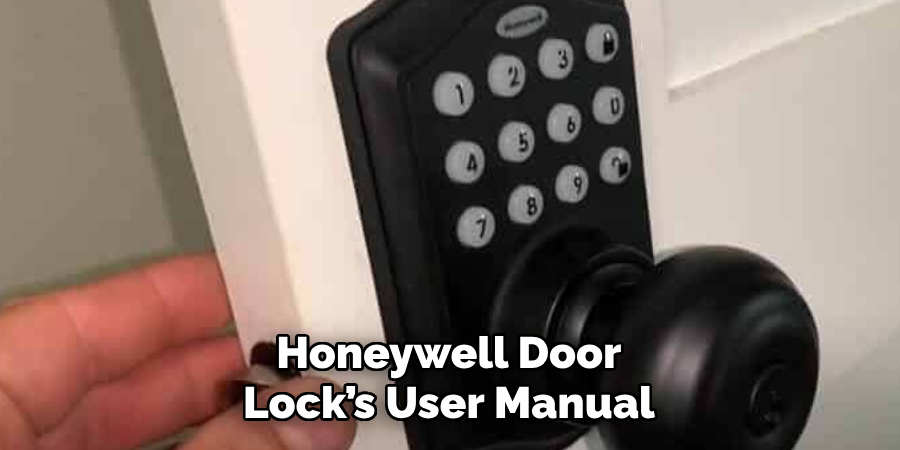
Conclusion
In summary, understanding how to change code on honeywell door lock is crucial for maintaining the security of your property. Whether you have a traditional keypad model or a modern touchscreen system like the Honeywell LYNX Touch Series, the process involves selecting the correct user code slot and inputting a new, secure code following your lock’s specific instructions.
It cannot be overstated how important it is to follow the procedures tailored to your particular Honeywell model to ensure the changes are applied correctly.
By regularly updating your access codes with combinations that are difficult to guess and unique to each user, you enhance the overall security of your home or office. Keeping your codes strong and secure, along with following the recommended security practices, not only protects your property but also gives you peace of mind.
These steps are important in maintaining the integrity of your Honeywell door lock system and safeguarding access to your spaces.
About
Safety Fic is a distinguished figure in the world of Diy design, with a decade of expertise creating innovative and sustainable Diy solutions. His professional focus lies in merging traditional craftsmanship with modern manufacturing techniques, fostering designs that are both practical and environmentally conscious. As the author of diy, Safety Fic delves into the art and science of Safety Fic-making, inspiring artisans and industry professionals alike.
Education RMIT University
(Melbourne, Australia) Associate Degree in Design (Safety Fic) Focus on sustainable design, industry-driven projects, and practical craftsmanship. Gained hands-on experience with traditional and digital manufacturing tools, such as CAD and CNC software.
Nottingham Trent University
(United Kingdom) Bachelor’s in diyfastly.com and Product Design (Honors) Specialized in product design with a focus on blending creativity with production techniques. Participated in industry projects, working with companies like John Lewis and Vitsoe to gain real-world insights.
Publications and Impact
In diy, Safety Fic his insights on indoor design processes, materials, and strategies for efficient production. His writing bridges the gap between artisan knowledge and modern industry needs, making it a must-read for both budding designers and seasoned professionals.
